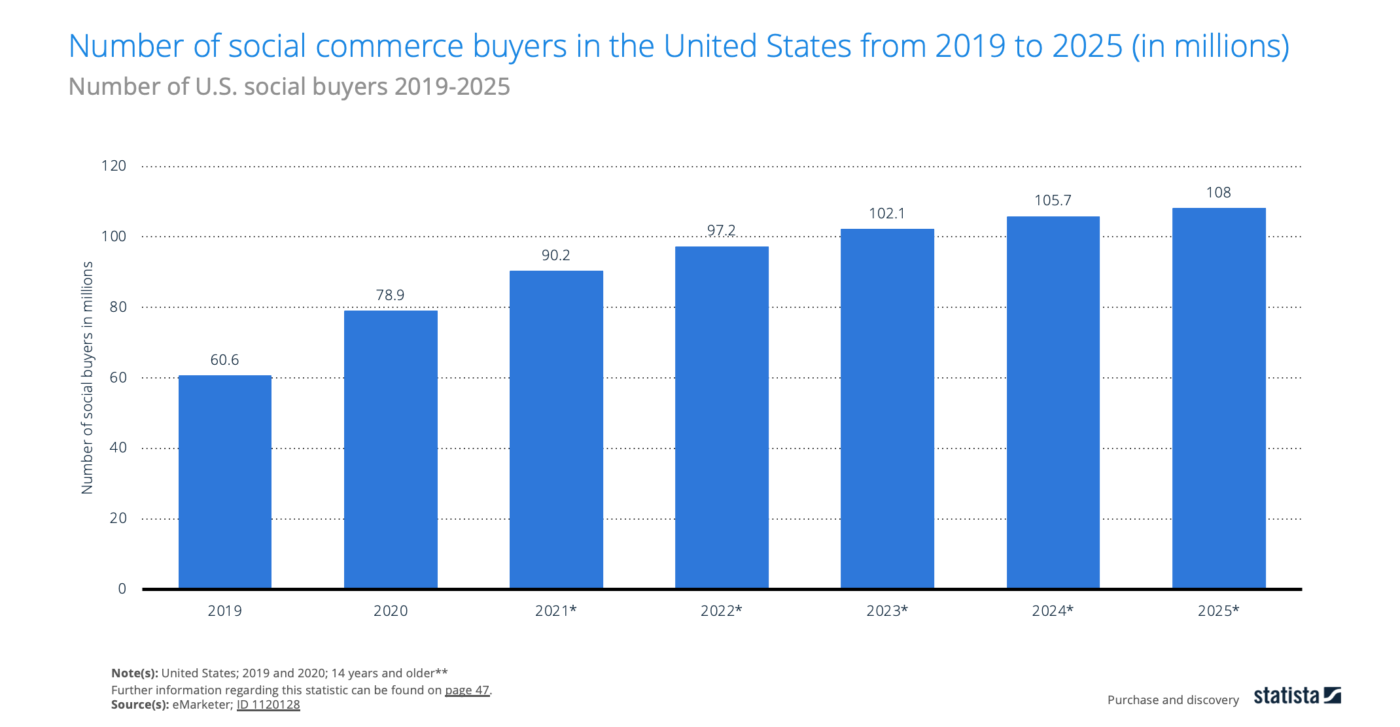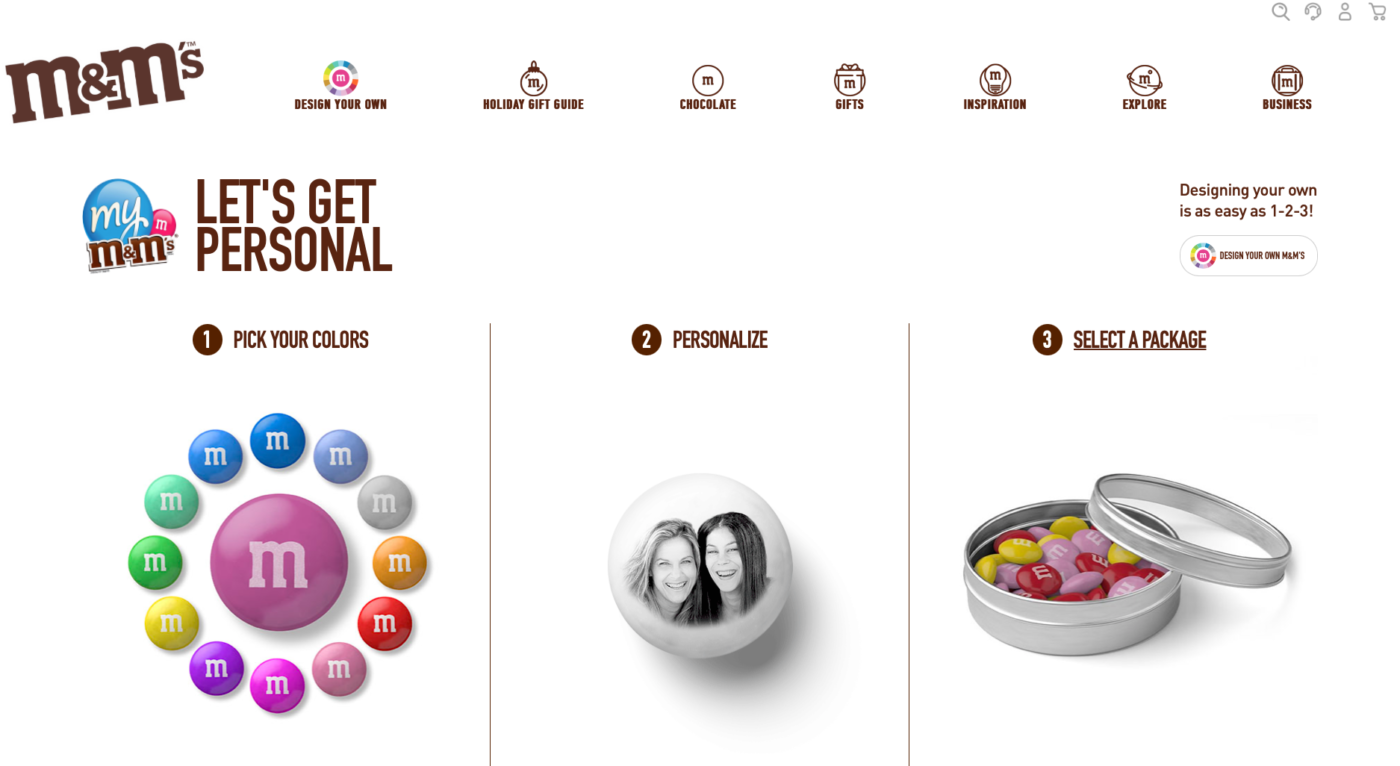Though the popularity of online shopping was trending upwards even before COVID-19, the past year and a half has seen a dramatic increase in online sales across a wide range of industries. While expected categories like household supplies, food delivery and personal care products saw significant growth, one of the largest jumps has been in the grocery industry. With many physical stores forced to limit capacity or close completely during the pandemic, some believed that this trend would be short-lived – but research has shown that a larger share of the population plans on continuing to shop online, even after the pandemic.
This fact has many grocery and CPG brands trying to figure out how to increase their digital presence and drive online sales. Traditional methods like email marketing, sponsored ads and customer reviews still hold significant value, but the popularity and increased capabilities of social media platforms have turned these channels into priority number one for many brands. Below, we look at how CPG brands can elevate their social media game and create meaningful connections with their target audiences.
Creating a Community
One of the most appealing things about social media is the opportunity to create a strong brand community – a collective of followers/customers that not only buy your products, but also engage with your content and advocate for your brand. Of course, this is easier said than done. Whether you want to follow the 80/20 rule (80% of your posts inform, educate, or entertain and 20% promote your brand), or the social media rule of thirds (promote, share and converse), the key is to deliver the content that your followers want in an original, authentic manner.
A great example of this is condiment brand Sir Kensington’s. Whether it be partnering with Chrissy Teigen (and her 36 million Instagram followers) on her own dipping sauce and Fries! The Movie, or educating followers on their ingredients, packaging, and sustainability efforts, they have found the perfect mix of product shots, recipe inspiration and educational content. Often linking back to their website, the community component of the brand continues with their Taste Buds program, a place to “earn free merch, connect with other food enthusiasts, and sample new products.”
Inspiring Consumers
It’s no secret that shoppers are more likely to support brands that reflect their own values, interests, and desires. Often this comes through the form of a perceived lifestyle or personality – think Red Bull or Apple – but nowadays consumers are demanding more than an aspirational tagline. They expect brands to have a mission larger than just making a profit. As Umbra Co-Founder Paul Rowan said on our podcast, Think Retail, “…the best brands are heroes. And I think if you start an idea for a company based on a heroic idea, you have a much better chance of success. We [as consumers] admire brands that have that kind of purpose. Heroism is something that everyone has always admired, and I think it’s something that shows leadership.” In fact, it has been found that brands who are viewed as making the world better earn an average of $9 more per customer compared to their competitors.
The good news is that there are some great examples of brands that are leveraging their social media channels to raise awareness and funds for great causes. One such brand is P&G, which has launched numerous initiatives in recent years that range from Secret’s $1 million commitment to support top women’s hockey players during COVID-19, to Pantene’s #HairHasNoGender campaign in support of the LGBTQ2s+ community. Along with creating an inspiring video series and encouraging followers to get involved and share their stories using hashtags, they also partnered with The Dresscode Project (DCP) to help “support and facilitate inclusivity training to hair stylists to make their salons more gender-affirming spaces for LGBTQ2S+ clients.” Of the decision to partner with Pantene, DCP’s founder Kristin Rankin stated, “We chose to partner with Pantene because they were the first hair care company to step up and say ‘we want to do better and be better.’”
Regardless of the size of a brand’s social media presence, using its channels as a space to amplify voices and facilitate change will always drive engagement and loyalty. You should work with a Facebook Ads Agency Bangkok that has the resources and ability to keep up with new trends through various learning opportunities.
Seamless Experiences
Consumers have become so comfortable using social media and interacting with brands online that 58% say that they would prefer to interact with a brand on social media instead of going into a store. This number is even higher among younger generations. Though part of this may be related to the pandemic, the high percentage shows that the convenience and level of control users have online often outweighs the physical experience of going into a store. Frankly, the disconnect between in-store and online is still prevalent for many brands that have yet to figure out how to create a holistic customer journey that is seamless across all touchpoints.
One brand that has managed to create a truly differentiated experience – from their social media accounts and their website to merchandise and in-store activations – is m&m’s chocolates. On social, the content has a fun, playful personality that fits with the brand and encourages engagement. The website elevates the brand’s digital presence even further, with features such as product personalization, gift guides, and “character” stories. It is one of the better examples of a brand website and social media presence that actually feels like the store experience – something you can see for yourself thanks to the virtual walkthroughs of their flagship locations.
Ensuring that every point of interaction is consistent, on-brand, and takes a 360-degree approach to the customer journey involves collaboration across different company departments – which is why examples like m&m’s are still few and far between. However, those that are able to showcase their brand online and in-store in a distinct way will set themselves up for success, regardless of the next trend, channel, or disruption.
Embrace the Possibilities – But Don’t Take Them for Granted
With all that being said, there is no denying that social media is at a crossroads. Promising updates for brands like Twitter launching a live-streaming shopping platform or Instagram rolling out branded content ads for Reels have been overshadowed by concerns surrounding privacy and mental health. In fact, health and beauty brand Lush recently made news for announcing their Global Anti-Social Media Policy – a pledge to stop posting on Facebook, Instagram, Tiktok and Snapchat. Of the decision, Lush Co-Founder and Product Inventor Mark Constantine said, “I’ve spent all my life avoiding putting harmful ingredients in my products. There is now overwhelming evidence we are being put at risk when using social media. I’m not willing to expose my customers to this harm, so it’s time to take it out of the mix.”
For Lush, this is a decision that reflects their values and the community that they have created – but is a luxury that most brands can’t afford. While some rightfully question what the future of social media looks like, the value these platforms hold for brands and customers is clear. The examples presented above show that there is a way to be genuine while also driving sales, and it is now up to marketers and brands to make the most of these platforms – otherwise, consumers will tune out for good.



